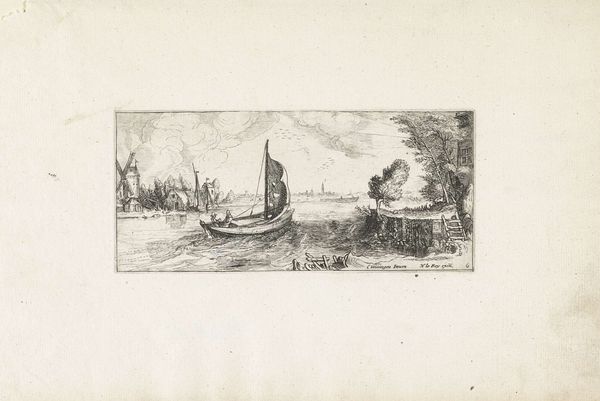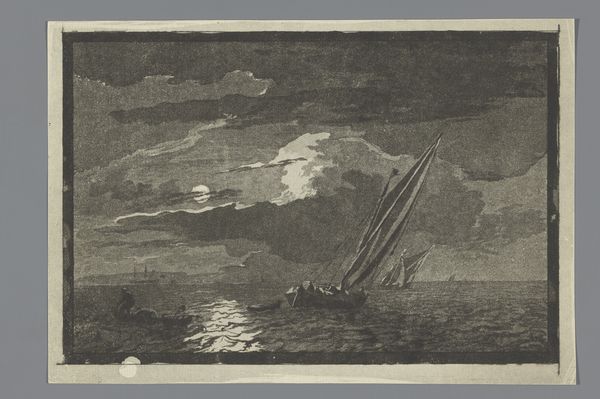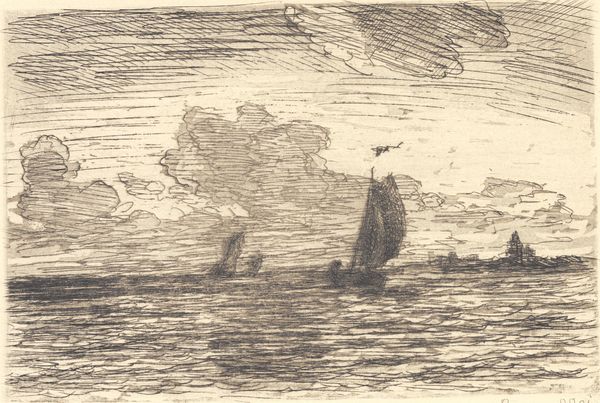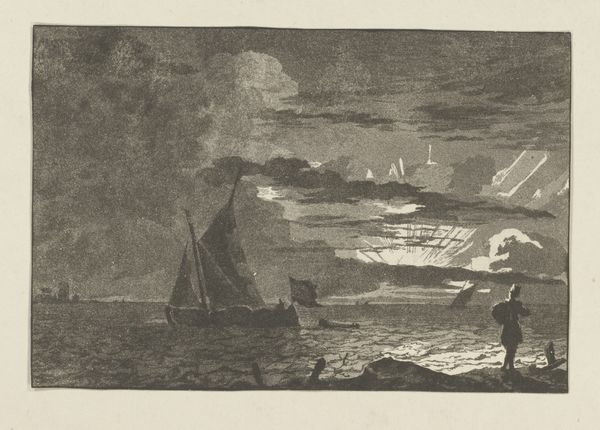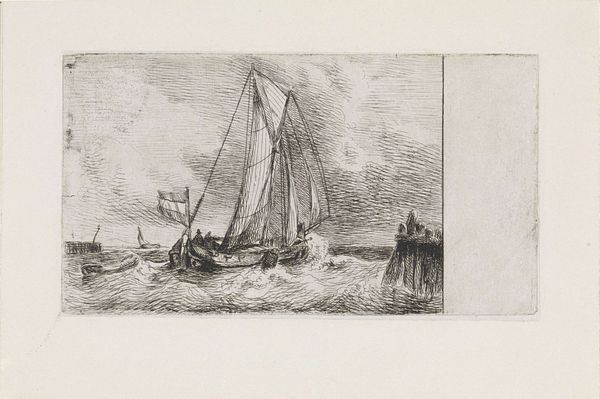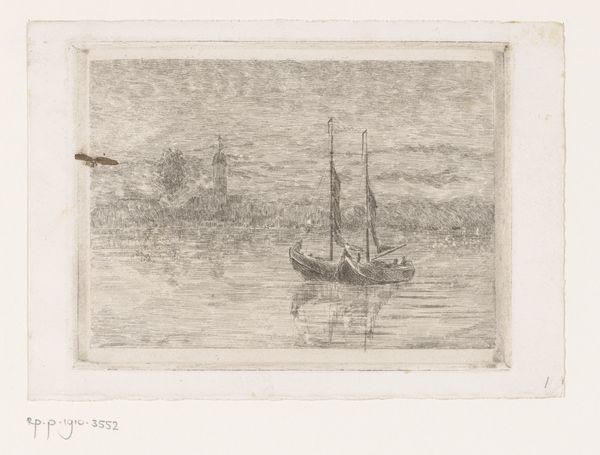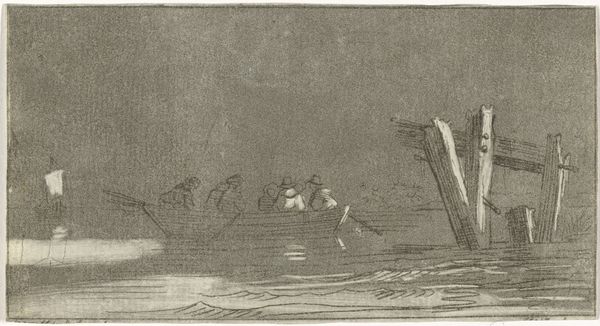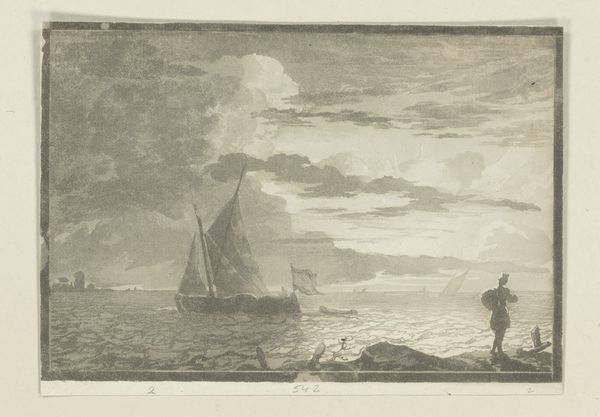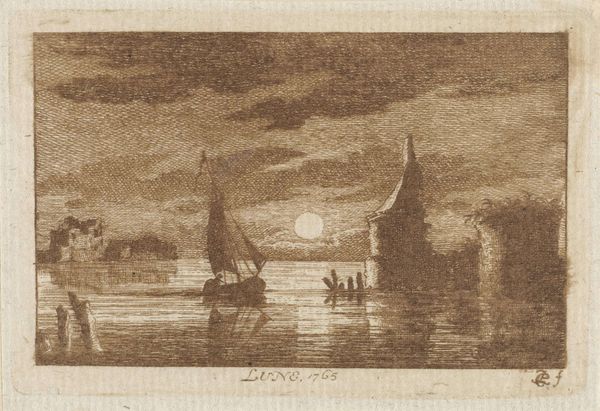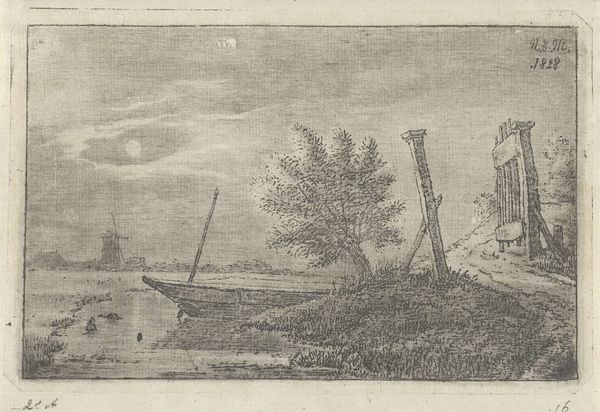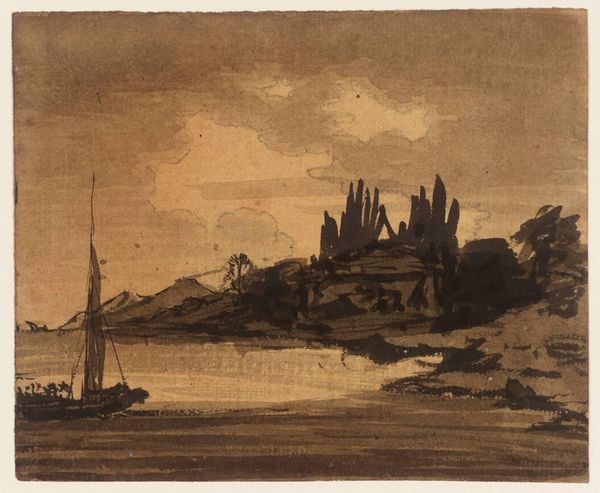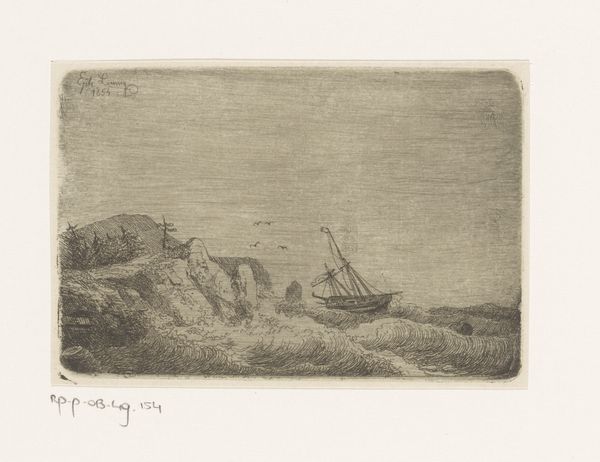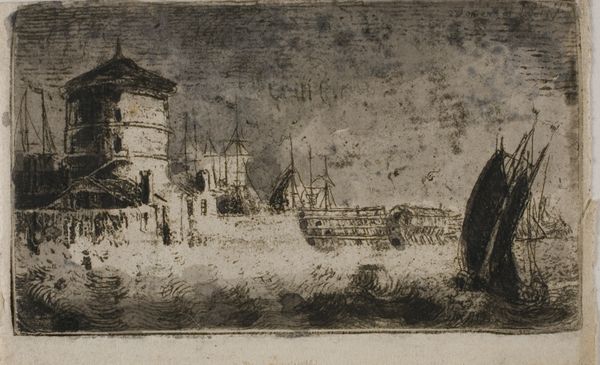
Dimensions: height 69 mm, width 128 mm
Copyright: Rijks Museum: Open Domain
Editor: Here we have "River View at Night" from 1766, created by Caspar Jacobsz. Philips. It's an etching and engraving printed on paper. I'm struck by how the artist creates such a detailed nocturnal scene using just lines. How do you interpret this work? Curator: I see an intriguing document of eighteenth-century labor practices, manifested in the very materiality of this print. Consider the physical act of etching and engraving - the artist’s hand meticulously manipulating tools to create this scene. What kind of labor do you imagine was necessary to create this image? Editor: It looks really delicate. It must have taken considerable time, steady hands, and maybe some special tools? Curator: Precisely! And the consumption of art like this—affordable prints—mirrored the broader expansion of consumer culture at the time. Think about where this print would have been displayed, the homes it might have adorned. It also reproduces the working lives of others -- sailors, building labourers... can you see how that interplay shifts our perspective? Editor: That’s a great point. I didn't consider how widespread this image may have been and the stories it could tell. The use of engraving to show labor is really interesting; it connects the content with the making of the art. Curator: Exactly. And how the materials themselves – the copper plate, the ink, the paper – connect to global trade networks. The means of production for this seemingly simple image touch upon complex systems of extraction, manufacture, and distribution. So how does seeing it like that alter your initial reading of Romantic landscape? Editor: It makes it much richer! Considering the labor involved and the social context really brings out a new depth I hadn’t noticed at first glance. Thanks! Curator: Indeed, thinking about process allows us to examine a traditional landscape through the lens of materiality and broader social and economic relations.
Comments
No comments
Be the first to comment and join the conversation on the ultimate creative platform.

